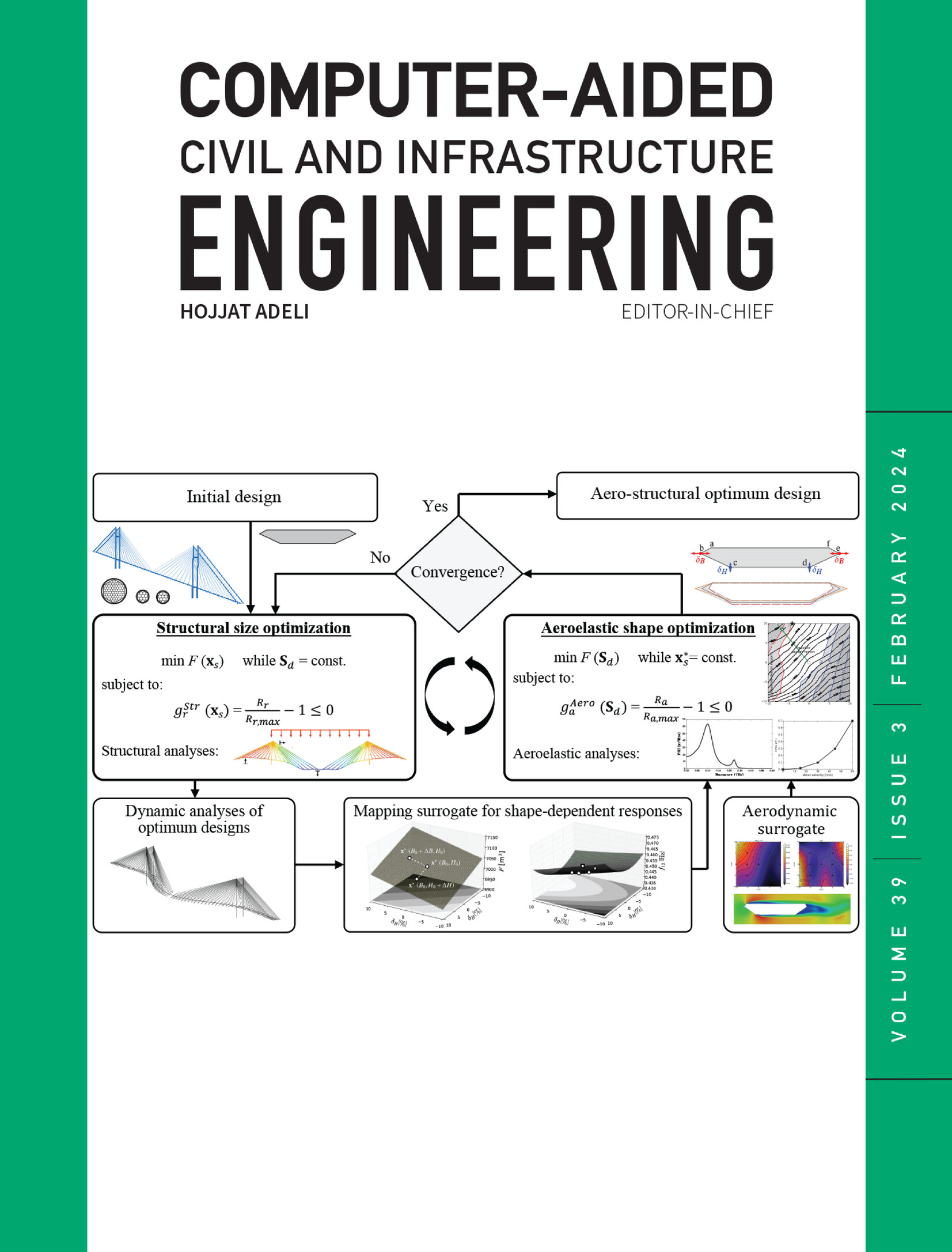使用激光扫描和地质复杂性增强机器学习预测路面开裂性能
IF 8.5
1区 工程技术
Q1 COMPUTER SCIENCE, INTERDISCIPLINARY APPLICATIONS
引用次数: 0
摘要
由于老化和重复加载,交通基础设施容易产生裂缝和老化。准确、及时的裂缝评估和预测对于有效的道路养护至关重要,但现有的研究往往依赖于裂缝类型、属性和严重程度等单个指标,无法捕捉裂缝恶化的全部复杂性。此外,有限的研究探索了交通、社会经济和气候变化对裂缝进展的长期影响,并且由于此类空间数据固有的复杂性,现有的机器学习(ML)模型难以解释个体预测因子的贡献。本研究开发了一种地质复杂性增强的ML (GML)方法来评估裂缝恶化并预测澳大利亚Wheatbelt地区未来各种情景下的裂缝。该研究利用激光扫描数据生成一种新的裂缝性能指数(CPI),并将地质复杂性(GC)措施与随机森林模型相结合,以捕获局部空间复杂性。结果表明,GML在预测基于cpi的裂纹恶化方面明显优于标准ML模型。未来情景裂缝预测表明,在小麦带地区,气候因子随时间的变化对裂缝扩展的影响大于交通和社会经济变化,如果没有有效的维护,裂缝扩展速率将显著增加。为制定预防性维修策略提供了经验依据。开发的方法和研究结果可以支持适应性、气候适应型基础设施和长期道路管理战略的发展,增强交通基础设施的可持续性。本文章由计算机程序翻译,如有差异,请以英文原文为准。
Predicting pavement cracking performance using laser scanning and geocomplexity-enhanced machine learning
Transport infrastructure is vulnerable to crack formation and deterioration due to aging and repetitive loading. Accurate and timely crack assessment and prediction are crucial for effective road maintenance, but existing studies often rely on individual indicators such as crack types, attributes, and severity, which fail to capture the full complexity of crack deterioration. Furthermore, limited research has explored the long-term impacts of traffic, socioeconomic, and climate changes on crack progression, and existing machine learning (ML) models struggle to explain the contributions of individual predictors due to inherent complexities in such spatial data. This study develops a geocomplexity-enhanced ML (GML) approach to evaluate crack deterioration and predict cracks under various future scenarios in the Wheatbelt region of Australia. The study employs laser-scanning data to generate a novel cracking performance index (CPI) and integrates geocomplexity (GC) measures with random forest models to capture local spatial complexities. Results demonstrate that GML significantly outperforms standard ML models in predicting CPI-based crack deterioration. Crack predictions in future scenarios reveal that in the Wheatbelt region, changes in climate factors over time have a more substantial impact on crack progression than traffic and socioeconomic changes, and without effective maintenance, crack propagation rate will significantly increase. It provides empirical evidence for developing preventive maintenance strategies. The developed methods and findings can support the development of adaptive, climate-resilient infrastructure, and long-term road management strategies, enhancing the sustainability of transport infrastructure.
求助全文
通过发布文献求助,成功后即可免费获取论文全文。
去求助
来源期刊
CiteScore
17.60
自引率
19.80%
发文量
146
审稿时长
1 months
期刊介绍:
Computer-Aided Civil and Infrastructure Engineering stands as a scholarly, peer-reviewed archival journal, serving as a vital link between advancements in computer technology and civil and infrastructure engineering. The journal serves as a distinctive platform for the publication of original articles, spotlighting novel computational techniques and inventive applications of computers. Specifically, it concentrates on recent progress in computer and information technologies, fostering the development and application of emerging computing paradigms.
Encompassing a broad scope, the journal addresses bridge, construction, environmental, highway, geotechnical, structural, transportation, and water resources engineering. It extends its reach to the management of infrastructure systems, covering domains such as highways, bridges, pavements, airports, and utilities. The journal delves into areas like artificial intelligence, cognitive modeling, concurrent engineering, database management, distributed computing, evolutionary computing, fuzzy logic, genetic algorithms, geometric modeling, internet-based technologies, knowledge discovery and engineering, machine learning, mobile computing, multimedia technologies, networking, neural network computing, optimization and search, parallel processing, robotics, smart structures, software engineering, virtual reality, and visualization techniques.

 求助内容:
求助内容: 应助结果提醒方式:
应助结果提醒方式:


